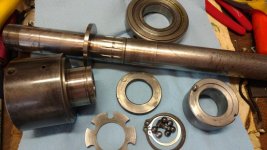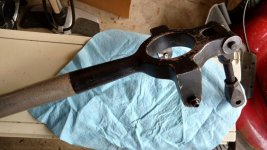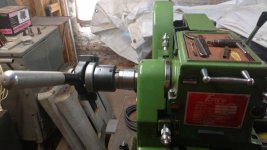Would someone please help in I.D.-ing this 5C lever action collet closer. It came with an older Enco Model 92010 bench lathe I purchased. There are no markings, numbers, or names on it anywhere. All the threads are imperial so I suspect it is US made, but not sure. It was disassembled and cleaned up because it wasn't working; hopefully I can restore it to working order.
Thanks in advance!
Lou O.
 ;
;
Thanks in advance!
Lou O.
 ;
;







